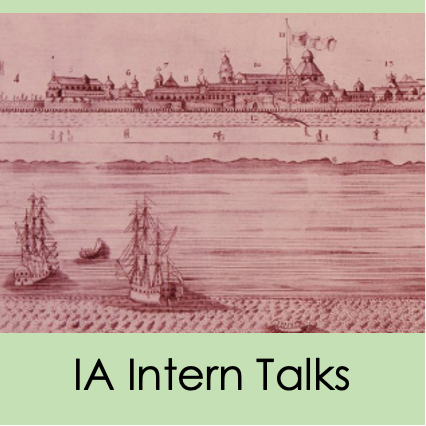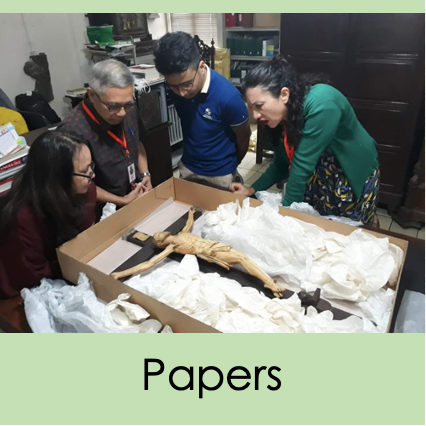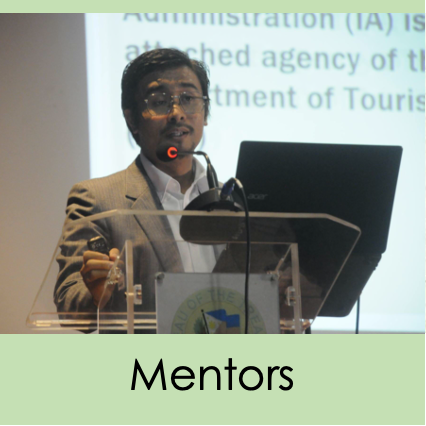By Maria Juvice Buñag
Note: This is a paper produced under the Internship Program of the IA Center for Intramuros Studies.
Abstract
The Philippines’ architecture is a result of natural evolution, influenced by a variety of factors. It arose from pre-colonial influences brought by our neighbors, occupiers, and colonists. As a result, the Philippines has become an architectural mix that is both the Chinese and Spanish style, although the European features remains more evident. The building operations of the friars were later taken up by Chinese Sangleys craftsmen and wood workers after the inflow of diverse ethnicities that settled in the nation. On the decorative themes, these Chinese Sangleys craftsmen, artisans and wood workers have left their local mark or distinctive styles. During the pre-war era, Chinese Sangleys were an important component of Intramuros’ development progress since they contributed to the hybridization of architectural styles and absorption of oriental features, which may be observed discreetly in extant structures inside Intramuros’ churches, fortifications, and other sites that are within Intramuros. In addition to understanding Chinese influence on Philippine architecture during the Spanish colonial period, the interpretation of globalization as “glocalization” is becoming extremely relevant. The established history of Intramuros architecture would indeed be insufficient as a basis for understanding modern-day Philippine architecture if it did not take into account for the Chinese Sangleys’ efforts to our nation’s infrastructure development.
Keywords: Chinese style; Intramuros; Architecture; Sangleys; Spanish colonial period.
To get a copy of the paper email [email protected]
This research paper was completed in September 2021 under the internship of Maria Juvice Buñag
About the Intern: Maria Juvice Buñag

Maria Juvice D. Buñag is currently a fourth-year Asian Studies student at the University of Santo Tomas – Faculty of Arts and Letters. Interests include studies of art and culture, as well as development in the socio-political climate of Asia. During her free time, she indulges to painting, illustrating, and digital arts as her past tie hobbies. She also takes great interest with the famous Asian artist such as; Surrealist artist Lauren Tsai and the great Japanese Art master Katshushika Hokusai. Her favorite aart movements are Asian Surrealism and superflat. Throughout her college years, she also had her share of organizational involvement. She was the former Public Relations Officer of UST Asian Studies Society. One of her spearheaded project is the CoSign 2019: Leadership Towards Sustainability held during the General Assembly of the Asian Studies Society. She was also a former Executive Assistant to the Deputy Director for External Affairs and former Executive Assistant for the head of Creatives and Design for UST-UNESCO. She is currently part of the Staff and Steering Committee of the UST-Model United Nations and UST-Model ASEAN Meeting.
Internship Mentor: Rancho Arcilla, M.A.
Testimonial on the Internship at the Intramuros Administration
“Once the opportunity had presented itself to be accepted in this internship, I made sure not to let this opportunity go to waste. My worthwhile stay as an intern in Intramuros Administration gave me several avenues to explore my interests and career path in the future. It gave me background about professionalism and work ethics for the workforce; my technical skills also improved during the three months of my stay. It is for me to say that I will leave my internship with a deep appreciation for Intramuros Administration.”
Learn more about the Internship Program of the Center for Intramuros Studies
Contact us: [email protected]
Note: The opinions expressed by our interns in their papers and presentations during their internships with us do not necessarily reflect any statement, stand, or position of the Intramuros Administration or of any of its personnel. Moreover, inclusion of research papers or project proposals in the online database of the Center for Intramuros Studies or the website of the Intramuros Administration do not necessarily constitute as an endorsement.
For more information contact the Center for Intramuros Studies via [email protected]
Cannot find what you are looking for? Try requesting for more data via our eFOI Portal.











